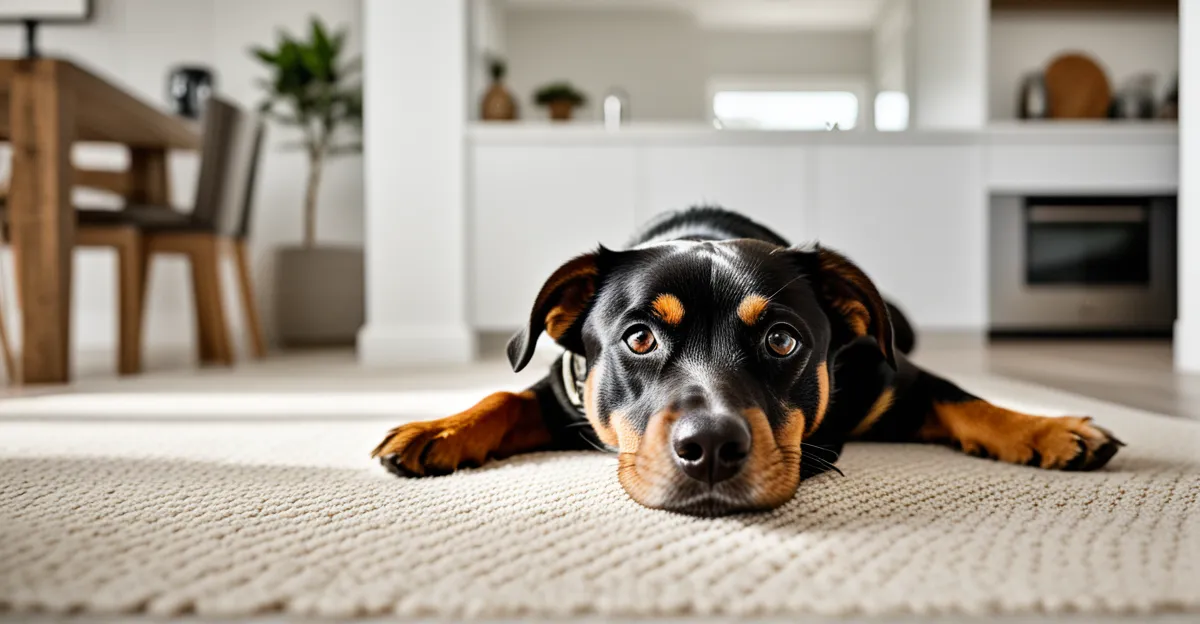Key Steps to Pet-Proofing Each Room
Pet-proofing your home is essential for home safety for pets. To start, secure hazardous areas like kitchens and bathrooms by installing childproof locks on cabinets containing cleaning supplies. Remove dangerous items such as small objects that pets might swallow or toxic plants. This step minimizes risks and helps maintain a safe environment.
Choose cleaning products and materials that are labeled pet-safe, avoiding harsh chemicals that could harm your furry friends. This choice is a cornerstone of practical pet advice to keep your home both clean and safe.
Also to read : How Do UK Pet Owners Find the Best Pet-Friendly Places?
Creating clear boundaries in open-concept spaces aids in training and monitoring pets. Use baby gates or designated rugs to signal off-limit areas. This technique supports structured movement within the home, reducing stress for both pets and owners.
By following these pet-proof home tips, you protect your pets from potential dangers while maintaining easy access throughout your living space. These steps provide a foundation to build a secure and comfortable home tailored to your pet’s needs.
In parallel : How Can Pet Owners in the UK Ensure the Well-being of Their Animals?
Designing Comfortable Spaces for Different Pets
Creating safe spaces for pets is central to enhancing pet comfort throughout your home. Dogs, cats, and small animals each have unique needs, so setting up dedicated zones tailored to their habits is essential.
For dogs, cozy beds placed in quiet, draft-free corners offer a sense of security. Including chew toys and soft blankets enriches these rest areas, supporting relaxation and play. Cats benefit enormously from vertical space; tall scratching posts and cat trees provide climbing and hiding spots, satisfying their natural instincts. Small animals like rabbits or guinea pigs thrive in secure enclosures with plenty of hiding places to reduce stress.
Incorporating these rooms for pets helps reduce anxiety and behavioral issues. A well-designed pet zone should combine comfort, stimulation, and safety to create a balanced environment.
Consider placement carefully: zones near family activity areas encourage social interaction, while separate quiet rooms suit more timid pets. The key in pet-proofing is understanding and adapting to each species’ unique preferences, ensuring every pet enjoys a comfortable and secure space within your home.
This tailored approach to pet comfort complements broader pet-proof home tips, aligning with practical pet advice that prioritizes safety alongside well-being.
Selecting Pet-Friendly Furniture and Décor
When choosing pet-friendly furniture, durability and ease of cleaning are paramount. Opt for materials resistant to scratches and stains, such as leather or tightly woven fabrics. These fabrics prevent hair from embedding deeply, making them easier to maintain. Furniture with removable, machine-washable covers also aligns well with home safety for pets, ensuring hygiene and comfort.
Pet-safe plants enhance your interior without risking toxicity. Avoid common hazardous plants like lilies and philodendrons. Instead, choose non-toxic options such as spider plants or Boston ferns that add greenery while keeping your environment safe. Integrating these choices is part of practical pet advice to create a harmonious living space.
Stylish integration of pet beds and accessories prevents clutter while providing designated resting areas. Consider built-in pet nooks within furniture or matching designs that complement the home décor. This approach ensures pets enjoy comfortable spaces without compromising style.
In summary, selecting durable materials, emphasizing stain-resistant fabrics, and incorporating pet-safe plants and matched accessories effectively balances aesthetics with the practical aspects of pet-proofing your home. These pet-proof home tips contribute to a cleaner, safer, and more inviting environment for both pets and owners.
Key Steps to Pet-Proofing Each Room
Pet-proofing your home requires systematic planning to enhance home safety for pets. Start by identifying and securing hazardous areas such as kitchens and bathrooms, where toxic substances and small objects often reside. Installing childproof locks on cabinets guards against accidental ingestion, a crucial step in practical pet advice.
Removing or relocating dangerous items—like electrical cords, breakables, and toxic plants—is essential. These elements pose significant risks if left unsecured. Using pet-proof home tips, regularly inspect rooms to ensure no new hazards have appeared, adapting as your pet’s curiosity evolves.
Choosing the right cleaning products balances cleanliness with safety. Always opt for pet-safe cleaning products that avoid harsh chemicals; this prevents harmful exposure while maintaining a hygienic environment. Such precautions reflect effective practical pet advice.
In open-concept living areas, establishing clear boundaries benefits both pets and owners. Utilize baby gates or strategically placed rugs to mark off-limit zones, reducing stress and supporting training. These boundaries encourage structured movement, reinforcing safety and routine.
Together, these steps enhance pet-proofing, protecting your pets from common household dangers and sustaining a secure, welcoming home environment.
Key Steps to Pet-Proofing Each Room
Pet-proofing demands carefully securing hazardous areas to maintain home safety for pets. Start by locking cabinets containing chemicals, medicines, or sharp objects with childproof locks. These barriers prevent curious pets from accessing potentially deadly items.
Removing dangerous items like electrical cords, breakables, and toxic plants is essential. For instance, loose cords can cause strangulation or chewing hazards, while breakables might shatter, creating injury risks. Toxic plants such as lilies or philodendrons should be eliminated to avoid poisoning.
Choosing pet-safe cleaning products complements these efforts by reducing chemical exposure. Many standard cleaners contain substances harmful if ingested or inhaled by pets. Switching to non-toxic formulas protects your pets and supports a healthy home environment.
In open-concept spaces, establishing clear boundaries is critical. Using baby gates or rugs helps create designated zones, limiting your pet’s access to unsafe areas. This also aids in training and reduces anxiety by providing structured spaces they can understand.
These pet-proof home tips collectively form a practical framework. By combining hazard removal, safe product selection, and space management, you enhance home safety for pets while fostering a secure, stress-free living space. This systematic approach epitomizes effective practical pet advice for any pet owner.
Key Steps to Pet-Proofing Each Room
Pet-proofing begins with securing hazardous areas to ensure home safety for pets. Lock cabinets containing cleaning supplies, medicines, or sharp items using childproof locks. This measure prevents pets from accidentally ingesting toxic substances. Removing loose electrical cords is vital, as chewing on cords poses risks such as electrocution or strangulation. Additionally, eliminate breakables and toxic plants like lilies to safeguard pets from injury and poisoning.
Selecting pet-safe cleaning products is another cornerstone of effective pet-proofing. Many conventional cleaners carry chemicals hazardous to pets if inhaled or ingested. Switching to non-toxic, pet-safe alternatives maintains cleanliness without compromising safety. This practical pet advice supports both your pet’s well-being and your household hygiene.
In homes with open-concept layouts, creating clear boundaries is essential. Baby gates or strategically placed rugs effectively delineate zones, restricting access to potentially dangerous or delicate areas. These boundaries aid training and reduce your pet’s anxiety by establishing consistent, understandable limits.
By combining these focused actions—hazard securing, safe product use, and thoughtful space management—your pet-proof home tips will promote a secure, comfortable setting tailored for your pet’s needs. This practical approach exemplifies reliable pet-proofing for every room.



